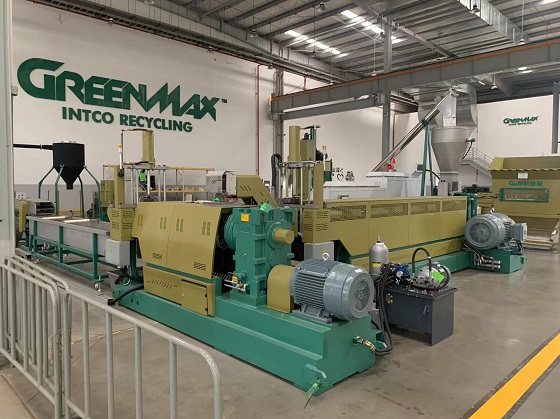Plastic Pelletizing System Detailed Introduction
As plastic manufacturing companies continue to expand, so does the production of plastic waste. However, the reuse of plastic waste can be achieved through the Plastic Pelletizing Recycling System. The system converts plastic waste into usable, clean raw materials through a closed-loop recycling process.
What is plastic pelletizer? A pelletizer is a piece of machinery and equipment that creates a material into a specific shape of pellets. It is commonly used in the plastics, chemical, pharmaceutical, and food industries to process raw materials into uniformly sized and shaped pellets for subsequent storage, transportation, use, or further processing. These granules can be reused as raw materials in manufacturing plants, thereby reducing raw material costs. Different types of granulators may differ in their working principle and applicable materials.

There are various types of pelletizers and the choice of pelletizer depends on the type of waste plastic material and the quality of the pellets to be cut. The different types of pelletizers include Strand pelletizers, underwater pelletizers and water ring pelletizers.
1) Strand pelletizers are mainly used to pelletize metallic materials such as steel strands.
2) Underwater pelletizers are a kind of pelletizing equipment widely used in the fields of plastics, rubber, chemicals and so on. It works by extruding the molten material through a mold and cutting it into pellets under the action of a cutter, and then the pellets fall into the water for cooling and curing.
3) Water ring pelletizers, which are suitable for pelletizing liquid polymers. The working principle is to extrude the molten polymer through the extrusion die and then cut into pellets, which fall into the cooling liquid to form a ring. The advantages of the water ring pelletizer are the high quality of the pellets produced and the high production efficiency.

The difference between underwater pelletizer and water ring pelletizer is as follows:
1) working principle is different: the working principle of underwater pelletizer is to extrude the molten material through the mold, and cut into pellets under the action of the cutter, and then the pellets fall into the water for cooling and curing; the working principle of water ring pelletizer is to extrude the molten material through the die head of the extruder, and then cut the pellets through the optional blades tightly attached to the die head at the rotary cut, and at the same time, with the help of the cooling water will be cut off the particles to rapidly cool and transported to the downstream Dryer.
2) Applicable materials are different: underwater pelletizer is suitable for plastics, rubber, chemical industry, etc.; water ring pelletizer is suitable for TPE plastic, polyurethane plastic elastomers and so on.
3) The shape of the particles is different: the shape of the particles of the underwater pelletizer is similar to round; the shape of the particles of the water ring pelletizer is oval.

Pelletizing and extrusion are similar processes, however, there are significant differences in the final product form. Pelletizing is a process that produces a cylindrical pellet form. In contrast, extrusion produces products such as plastic film or a variety of other shapes. Pelletizing is ideal for successfully converting waste plastics into the raw materials needed for the production process. Extrusion, on the other hand, is ideal for the production of plastic packaging or other related products.
One of the main benefits of pelletizing is the ability to significantly reduce the amount of plastic waste generated. Through careful implementation of the pelletizing process, plastics manufacturers are able to significantly reduce the amount of waste and transform waste plastics that would otherwise be considered useless into high-quality materials that can be used in a wide range of manufacturing processes. This transformation process not only demonstrates the efficient use of resources, but also makes a positive contribution to the concept of greening the environment and contributing to sustainable development. In addition, pelletizing also brings a lot of convenience to plastic pellets, such as easier storage of plastic pellets, which can effectively save storage space; more convenient transportation, which reduces the cost and difficulty of transportation; and also optimizes the processing process, making the whole operation more efficient and orderly!

The purpose of pelletizing is to convert waste plastics into clean raw materials that can be used in the production process. By pelletizing, plastics manufacturers can reduce their environmental impact by reducing waste and reusing materials. The quality of the pellets is determined by a number of factors, including the type of waste plastic material, the type of pelletizer, and the heating and cooling systems used. In addition, the conveying system and extrusion process also affect the quality of the pellets. It is critical to work with a reputable plastics pelletizing company that values product quality and customer satisfaction.
When selecting a customized plastics pelletizing system, it is important to consider factors such as the conveyor system, the extrusion process, the heating and cooling system, and the third-party services offered by the manufacturer. Package Greenmax offers customized plastic pelletizing systems to meet the needs of plastics manufacturers.
